Introduction
Robotic Process Automation (RPA) is revolutionizing the Business Intelligence (BI) landscape, empowering organizations to streamline operations, improve data accuracy, and optimize services. The integration of RPA with cutting-edge technologies like AI and ML is propelling industries towards rapid digital transformation. In 2024, businesses are embracing agility, innovation, and a customer-focused approach, investing in digital tools that showcase tangible value.
RPA is not limited to industrial settings but is also making its mark in service industries, demonstrating its versatility and growing acceptance. The concept of hyperautomation, which combines RPA with AI, ML, and NLP, is reshaping business operations, unlocking deeper insights, and revolutionizing end-to-end processes. Tailoring RPA to industry needs is a strategic enabler for organizations to refine their operational blueprint and amplify customer satisfaction.
Real-world case studies highlight the transformative power of RPA in BI, particularly in the logistics and supply chain sector. By automating data analytics and leveraging BI for strategic planning, businesses can make informed decisions and stay competitive in today’s fast-evolving market.
Gartner’s Perspective on RPA: Definition and Market Trends
Robotic Process Automation (RPA) is revolutionizing the Business Intelligence (BI) landscape, with software robots or ‘bots’ now performing tasks that were once manual and time-consuming. These advancements are streamlining operations, improving the accuracy of data, and liberating human talent for higher-level strategic roles. Surrey County Council, an organization with a rich history and a mission to enhance local lives, has embraced automation to optimize services for over a million residents. By establishing a precise baseline of asset health, organizations can sidestep inefficiencies and align maintenance efforts with real needs, rather than guesswork.
The interplay of RPA with cutting-edge technologies like AI and ML is propelling industries towards rapid digital transformation. As Daryl Plummer, VP at Gartner, notes, AI-assisted software development is accelerating developer productivity, enabling them to focus on strategic tasks such as application design. The intelligence embedded in these applications adapts and learns, paving the way for more efficient and reliable automated workflows, ultimately enriching user experiences.
The path of digital transformation in 2024 is marked by a shift towards agility, innovation, and a customer-focused approach. It’s a cultural pivot that encourages organizations to defy convention and embrace experimentation. Automating key elements like product data management (PDM) and the bill of materials (BOM) not only cuts costs but also speeds up product deployment, underlining the significance of investing in digital R&D tools that showcase tangible value.
Robots are no longer limited to industrial settings but are making their mark in other sectors as well, as observed in the Canadian market for robotics. The use of service robots ranges from personal assistance to professional support, demonstrating the versatility and growing acceptance of RPA across different sectors. Tungsten Automation’s rebranding reflects this evolution, underscoring their commitment to supporting their clients’ ongoing transformation endeavors with steadfast dedication and innovative solutions.
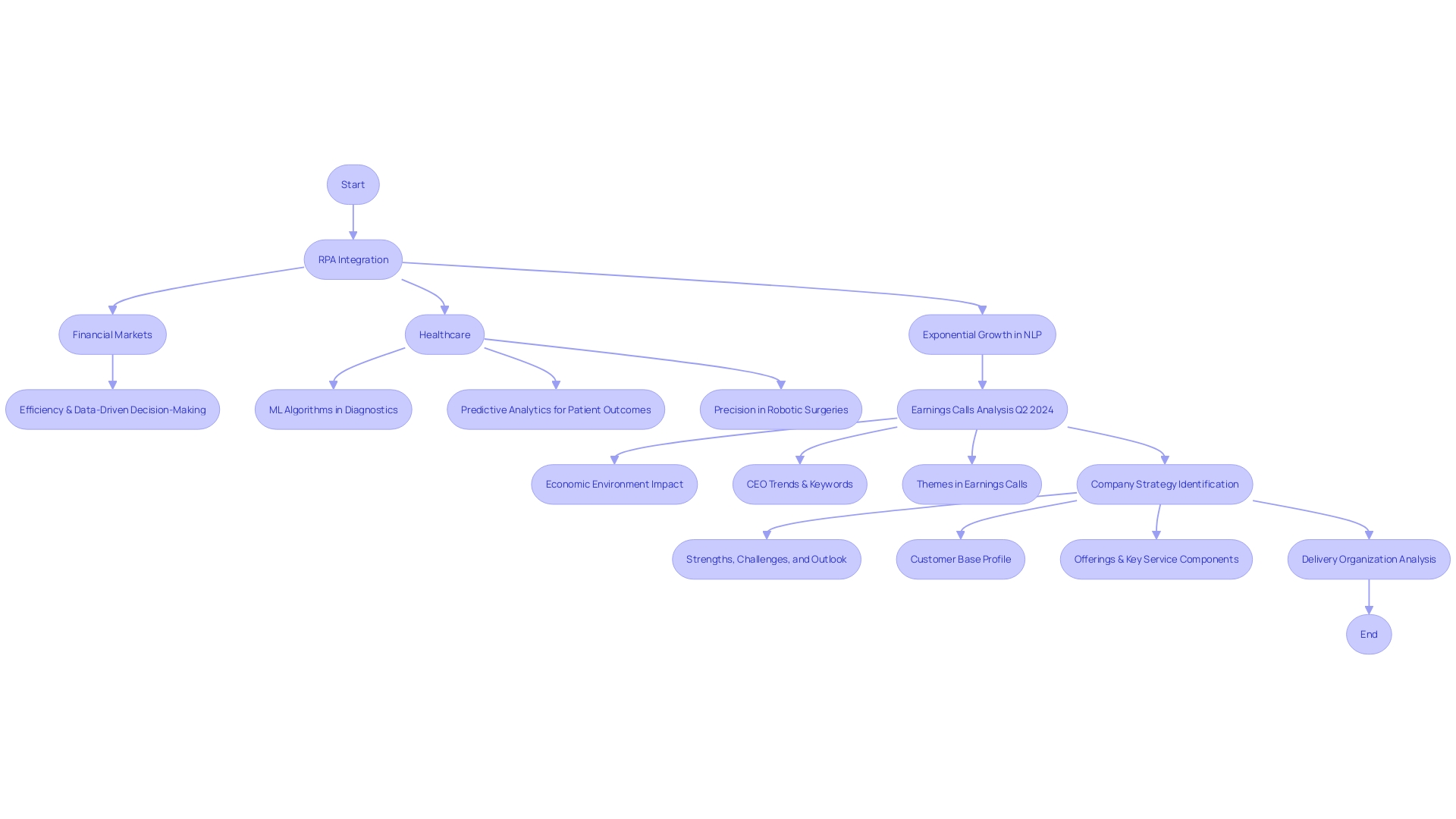
The Integration of RPA and Business Intelligence: Unlocking Deeper Insights
- Robotic Process Automation (RPA) is revolutionizing the way we understand and leverage Business Intelligence (BI). By enabling automated information gathering and processing, we bypass the risk of human error, paving the way for accurate, trust-worthy insights.
A prime example of RPA’s impact is seen in retail, where a prominent company automated the assimilation and examination of customer information. This real-time insight into consumer behaviors allowed for more effective marketing strategies and enhanced customer contentment.
Besides extracting insights, the fusion of RPA with BI tools serves the crucial role of visualization and reporting. The advent of automated report generation not only conserves time and resources but also empowers stakeholders with immediate, precise data.
In the wider context of today’s rapidly evolving tech scene, where firms are shifting to agile, value-driven operations, the combination of RPA and BI remains a cornerstone for innovation and efficiency.
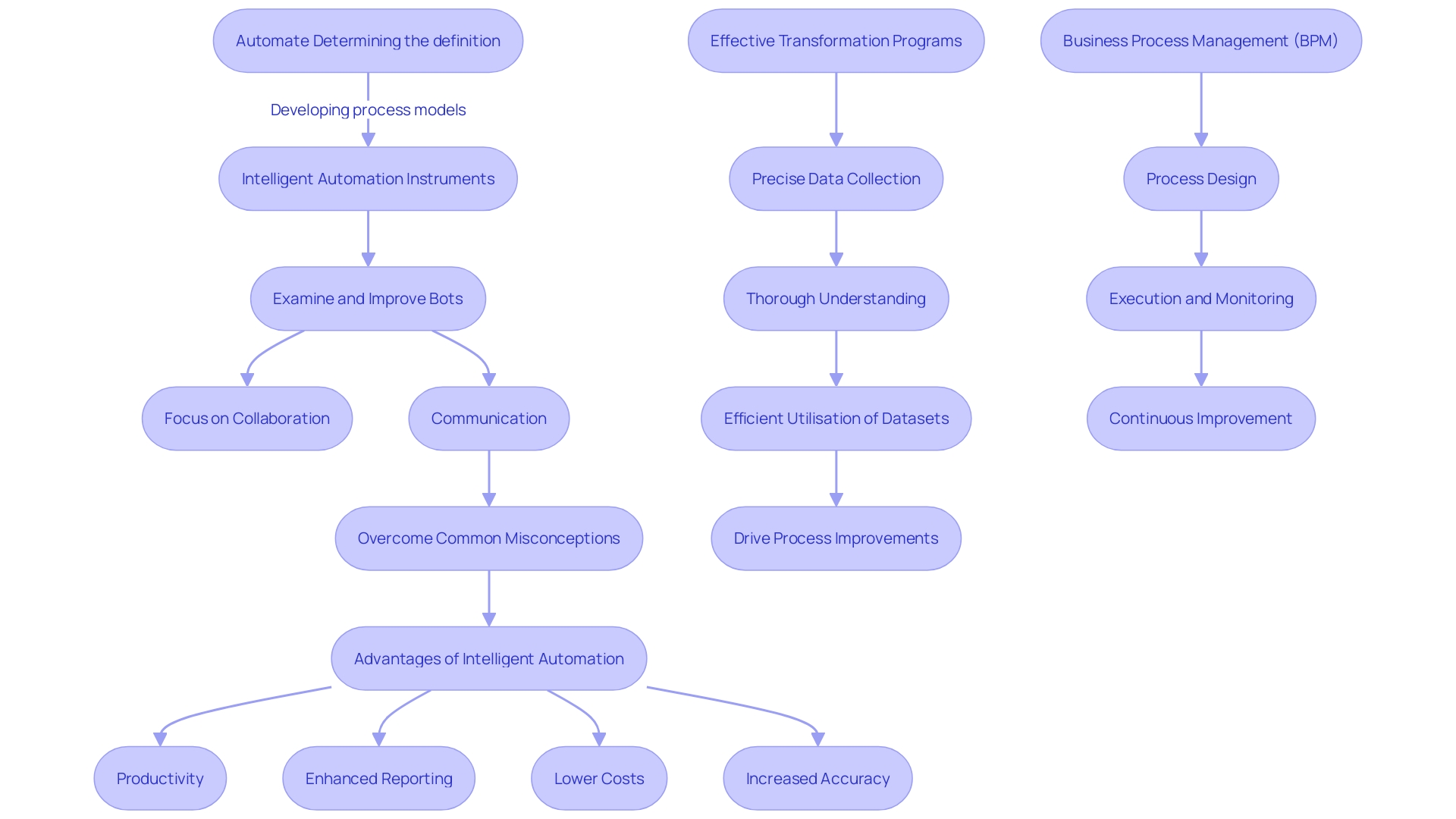
Hyperautomation: The Future of RPA and Business Intelligence
Hyperautomation, a cutting-edge concept introduced by Gartner, is revolutionizing the way businesses operate by integrating Robotic Process Automation (RPA) with artificial intelligence (AI), machine learning (ML), and Natural Language Processing (NLP). This synergy of technologies propels enterprises into a new realm of efficiency, where complex business processes are both automated and intelligent. Specifically, in the realm of RPA and Business Intelligence (BI), hyperautomation enables organizations to access vast oceans of unstructured information, extracting invaluable insights. AI and ML algorithms are used to analyze and comprehend text-based information such as customer feedback, social media commentary, and comprehensive market reports, unveiling trends and sentiments that influence strategic decisions.
Hyperautomation goes beyond simple task automation; it encompasses entire end-to-end processes, handling both structured and unstructured tasks with finesse. Take, for instance, a healthcare provider that implemented hyperautomation to streamline patient information extraction from medical records, optimize insurance claims processing, and craft personalized treatment plans drawing from a wealth of historical information. The outcomes were remarkable: substantial time and cost efficiencies, elevated accuracy in data handling, and, most importantly, significantly improved patient care.
In practice, hyperautomation can be observed in various applications such as developing advanced chatbots for customer support, enhancing the order-to-cash process in financial operations, and fine-tuning diagnostic testing in medical laboratories. These practical instances highlight the transformative capability of hyperautomation, where it not only speeds up current processes but also introduces novel approaches to provide assistance. As organizations keep on investigating and executing these cutting-edge advancements, the scene of business activities is being reshaped, clearing a path for remarkable degrees of profitability and dynamic capability.
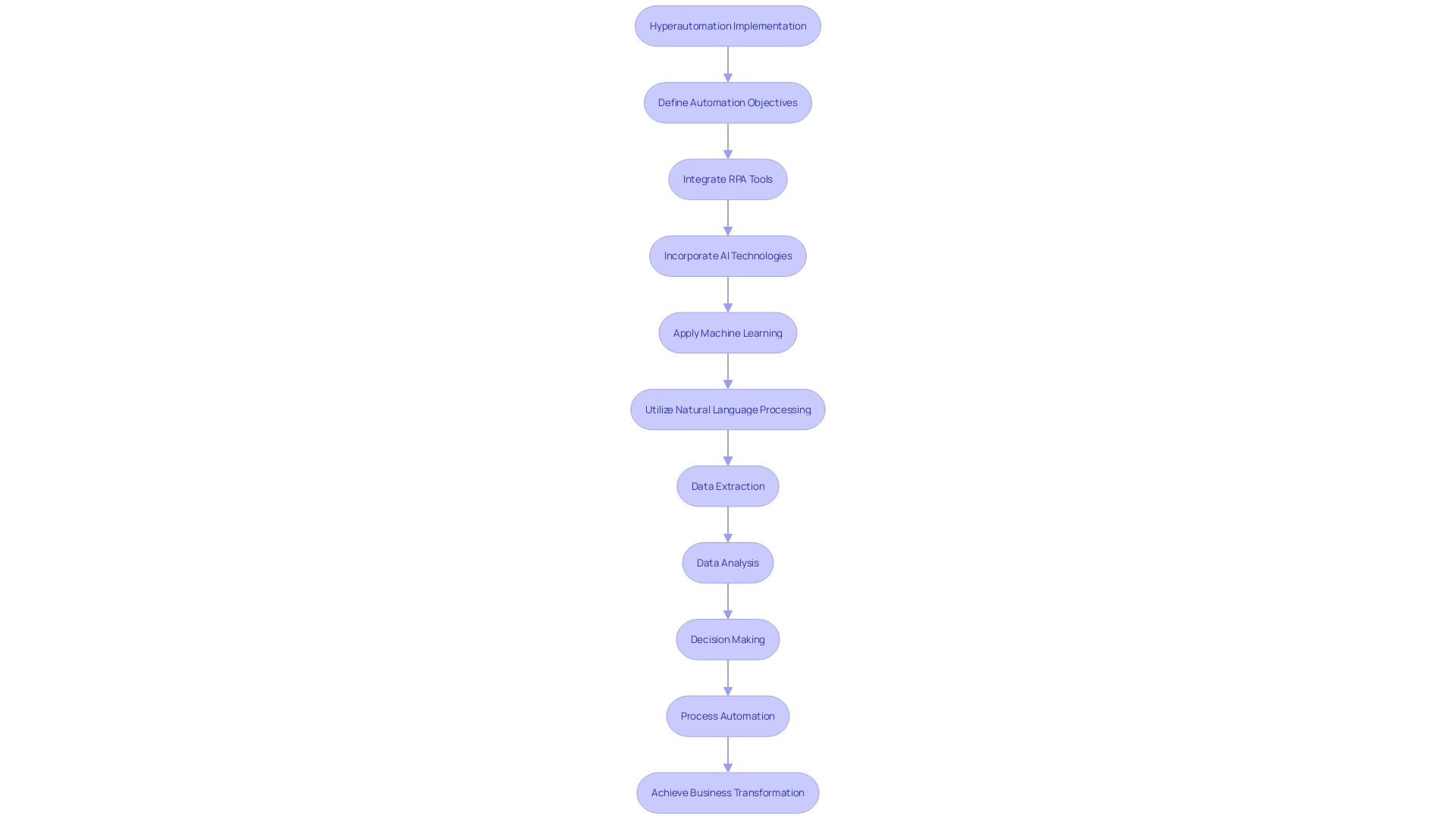
Vertical-Specific Solutions: Tailoring RPA to Industry Needs
Embracing Robotic Process Automation (RPA) is more than a technological leap; it’s a strategic enabler for industries to refine their operational blueprint. Banks, for instance, have revolutionized customer interactions by automating onboarding and loan processing, which minimizes errors and delivers swifter services, directly amplifying customer gratification. This reflects the digital transformation observed in financial institutions such as TBC Bank and M&T Bank, where the incorporation of advanced tools guarantees compliance with strict security and regulatory standards, maintaining the smooth operation of this sector.
Manufacturing is another domain reaping RPA’s benefits, where precision in inventory management and supply chain processes can be significantly enhanced. By substituting manual inspection with automated quality checks, manufacturers cut down lead times and bolster productivity, echoing the transformative impact of automation in technology-intensive operations. This is not just theory; statistics show that 94% of companies handle repetitive tasks, with 90% of knowledge workers reporting job improvement due to automation, and 66% citing productivity boosts.
Moreover, companies such as Rackspace emphasize the significance of customizing technological solutions, guaranteeing that they match user preferences and privacy standards. As industries immerse themselves in the digital era, RPA stands as a pillar for reimagining business intelligence, fostering innovative practices, and propelling customer experiences to new heights. It is through these tailored, industry-specific RPA solutions that businesses can navigate market competition and secure their position at the vanguard of their respective fields.
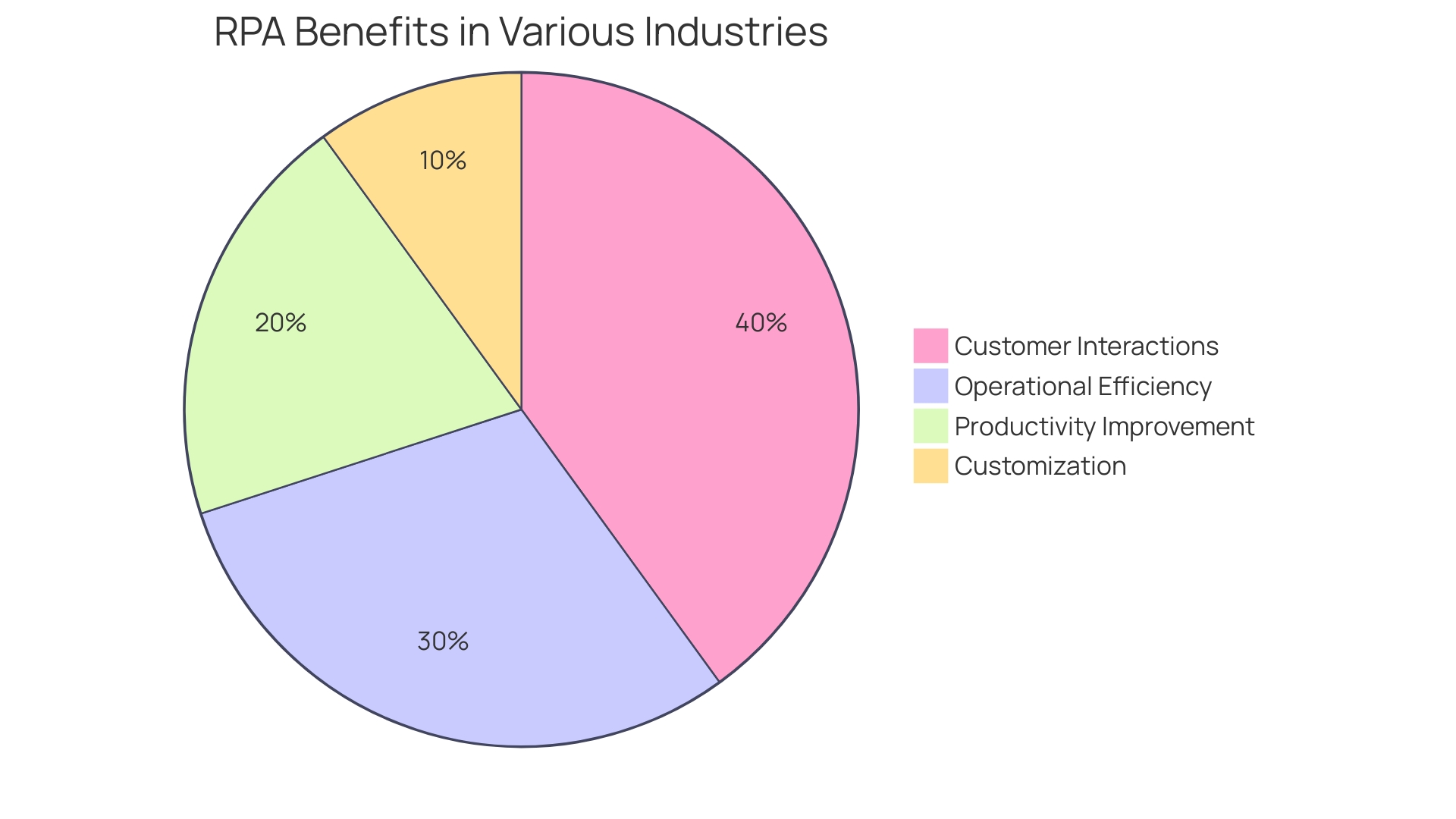
Case Study: Real-World Applications of RPA in Business Intelligence
The integration of Robotic Process Automation (RPA) into Business Intelligence (BI) systems is transforming the logistics sector, as evidenced by the journey of Norway’s leading discount chain, Europris. After partnering with Swisslog for the automation of its central warehouse, Europris has seen its operations evolve over three phases, reaping the benefits of automation in supply chain management.
The utilization of RPA in BI enables companies to automate complex information collection processes, which previously involved labor-intensive tasks such as email processing, document handling, and invoice reconciliation. With RPA, these processes are streamlined, leading to enhanced productivity and reduced operational costs and risks. Intelligent Document Processing (IDP), a subset of RPA, has been particularly transformative in the transportation and logistics industry by improving efficiency and offering a strong Return on Investment (ROI).
BI techniques, such as data mining and performance benchmarking, offer profound insights into operations, markets, and customer behavior, enabling data-driven decision-making. For instance, logistics service provider Rhenus UK offers bespoke logistics solutions, leveraging BI to optimize transport chains by air, land, and sea, and enhance the overall supply chain.
The significance of this technological synergy is highlighted by a McKinsey survey, which found that despite challenging market conditions, logistics leaders are increasingly investing in technology to address their operational challenges. This trend underscores the urgency for companies to adopt advanced BI and RPA solutions to stay competitive.
In summary, by automating data analytics and leveraging BI for strategic planning, organizations can not only identify inefficiencies but also predict future demands, making informed decisions that propel their businesses forward. The experience of Europris and other industry leaders serves as a testament to the transformative power of RPA when integrated with Business Intelligence in the logistics and supply chain sector.
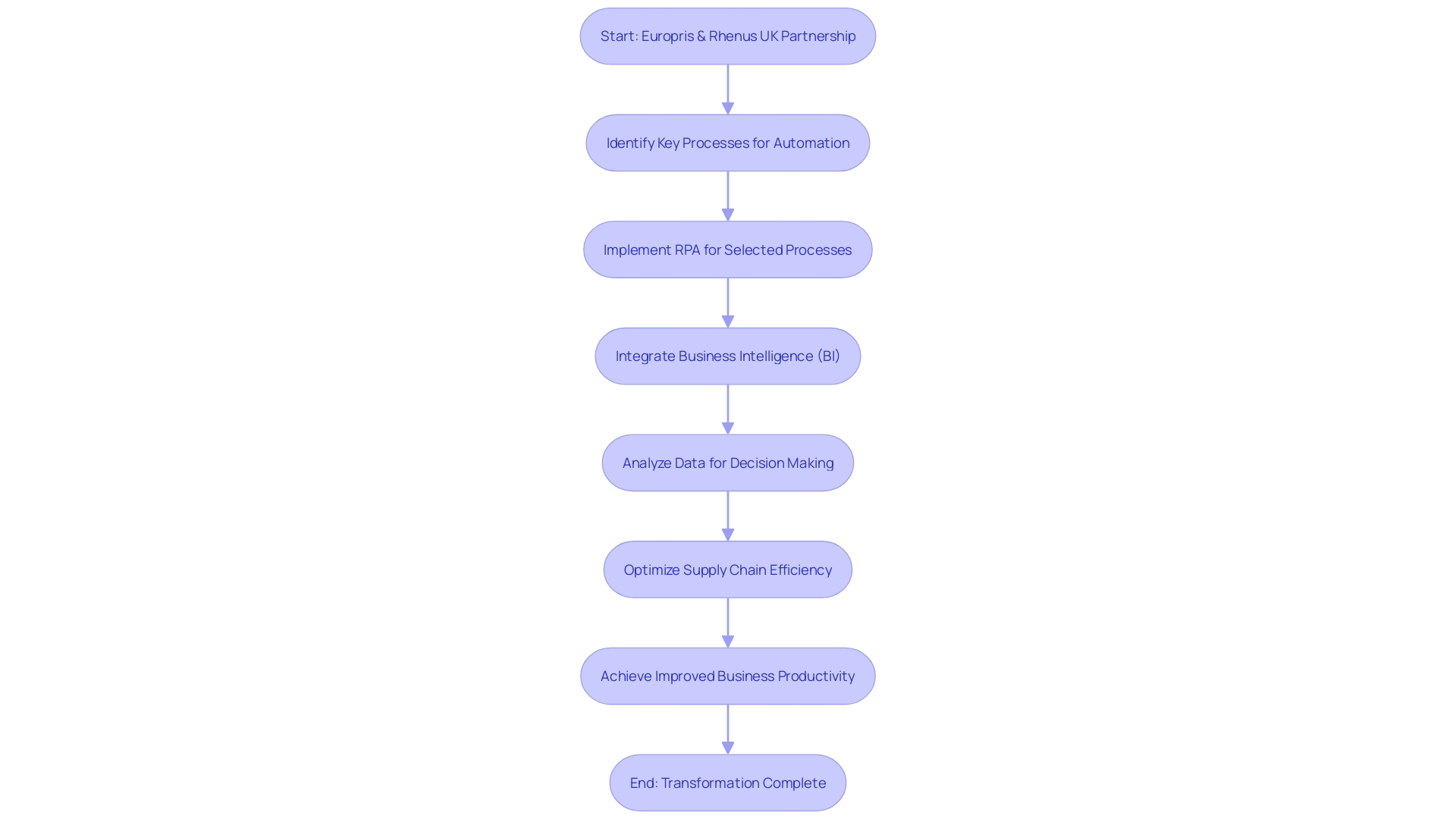
Conclusion
In conclusion, RPA is revolutionizing the BI landscape by streamlining operations, improving data accuracy, and optimizing services. The integration of RPA with AI and ML is propelling industries towards rapid digital transformation and enabling organizations to refine their operational blueprint. Real-world case studies in the logistics and supply chain sector highlight the transformative power of RPA in BI, allowing businesses to make informed decisions and stay competitive in today’s fast-evolving market.
Embracing RPA is a strategic enabler for industries to revolutionize customer interactions, enhance precision in inventory management, and improve productivity. By tailoring RPA to industry needs, organizations can amplify customer satisfaction and foster innovative practices. The concept of hyperautomation, which combines RPA with AI, ML, and NLP, is reshaping business operations, unlocking deeper insights, and revolutionizing end-to-end processes.
In summary, the integration of RPA and BI is unlocking deeper insights and transforming industries. By adopting these advanced technologies, businesses can reshape their operations, drive productivity, and make data-driven decisions. The future of RPA and BI is bright, and organizations that embrace these technologies will stay ahead in today’s competitive market.

